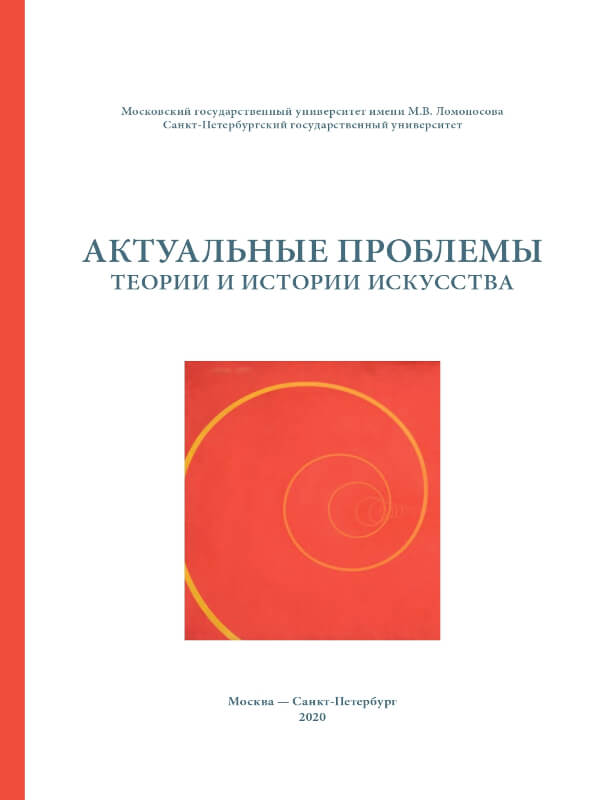Conflicts and Adaptions: How to Display the Art of the Soviet Period
DOI:
https://doi.org/10.18688/aa200-5-64Keywords:
Art Museum of Estonia (KUMU), Estonian art, collection, exhibition, Soviet artAbstract
In 2006, a new main building (named Kumu) of the Art Museum of Estonia was opened. Creating a new permanent exhibition, museum confronted by the question how to show Estonian art from the Soviet times as exceptional period in our art history, intertwined with the topics of power and imposed-upon art ideologies. We have tried to find an answer to this question twice by now (in 2006 and 2016).
The article is about two different ways of creating the exposition, although the basis of both of them is the issue of the relations between art and politics. The first display strongly marked the power lines, separated periods and emphasised their differences. The new permanent display is more ambivalent and discursive, taking into consideration the attitudes of the younger generation towards the long-ago period. Our art history at the time was divided into three distinctive histories. First, the works that could be shown to the public, which nevertheless contained independent national and social-critical approaches. Second, the works that were never displayed for the general public. Third, the art of those who escaped in 1944 to the West and continued living there as artists at the first opportunity.
All this together constitutes our art history, although it is not easy to tie it together, and it is even more difficult to present it in a museum as spatial and temporal consensus.
References
Allas A. Conflicts and Adaptions. Estonian Art of the Soviet Era (1940 –1991). The 4th Floor Permanent Exhibition of the Kumu Art Museum. Tallinn, Eesti Kunstimuuseum Publ., 2016.
Allas A.; Helme S.; Raudsepp R. (eds.). Kumu – kunst elab siin. Eesti Kunstimuuseumi peahoone. Kumu kunstimuuseum. Art Lives in Kumu. The Main Building of the Art Museum of Estonia — Kumu Art Museum. Tallinn, Eesti Kunstimuuseum Publ., 2006 (in Estonian and English).
Belting H. Europe: Eeast and West at the Watershed of Art History. Belting H. A History after Modernism. Chicago, London, The University of Chicago Press Publ., 2003, p. 57.
Helme S. Paradigma muutus 1960/1970ndate vahetusel. A Paradigm shift in the late 1960s and early 1970s. Kangilaski J. (ed.). History of Estonian Art. 6. Part II. 1940–1991. Tallinn, Sihtasutus Kultuurileht Publ., 2013, pp. 29–83 (in Estonian, summary in English).
Helme S. (ed.). Proceedings of the Art Museum of Estonia 4. Different Modernisms, Different Avant-Gardes. Problems in Central and Eastern European Art after World War II. Tallinn, Eesti Kunstimuuseum Publ., 2009.
Kangilaski J. Eesti kunst diktaatorite ja sõja surve all. Estonian Art Under Pressure: Dictatorial Regimes and the War. Kangilaski J. (ed.). History of Estonian art. 6. Part I. 1940–1991. Tallinn, Sihtasutus Kultuurileht Publ., 2013, pp. 15–56; 125–174 (in Estonian, summary in English).
Komissarov E. Romantiline ja edumeene. Stalinistlik impressionism Baltimaade maalikunsti 1940.–1950. aastatel. Kataloog. Romantic and Progressive. Stalinist Impressionism in Estonian Painting in the 1940s–1950s: Catalogue. Tallinn, Eesti Kunstimuuseum Publ., 2016 (in Estonian and English).
Kurg A. Feedback Environment: Rethinking Art and Design Practices in Tallinn During the Early 1970s. Studies on Art and Architecture 20/1–2. Tallinn, Eesti Kunstiteadlaste Ühing Publ., 2011, pp. 26–58.
Piotrowski P. Towards Horizontal Art History. Anderson J. (ed.). Crossing Cultures: Conflict, Migration and Convergence. Melbourne, The Miegunyah Press Publ., 2009, pp. 82–86.
Tatar T. Kolmas tee Esti NSV kunstis: avangardi ja võimumeelsuse vahel. The Third Way in Estonian Art of the Soviet Period: Between Collaboration and Avant-Garde: Ph. D. Thesis. Tartu, University of Tartu Press Publ., 2015 (in Estonian, summary in English)


